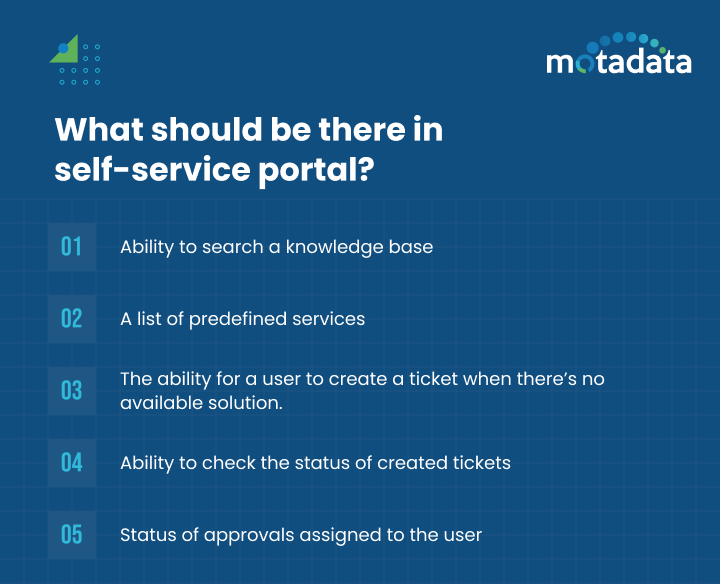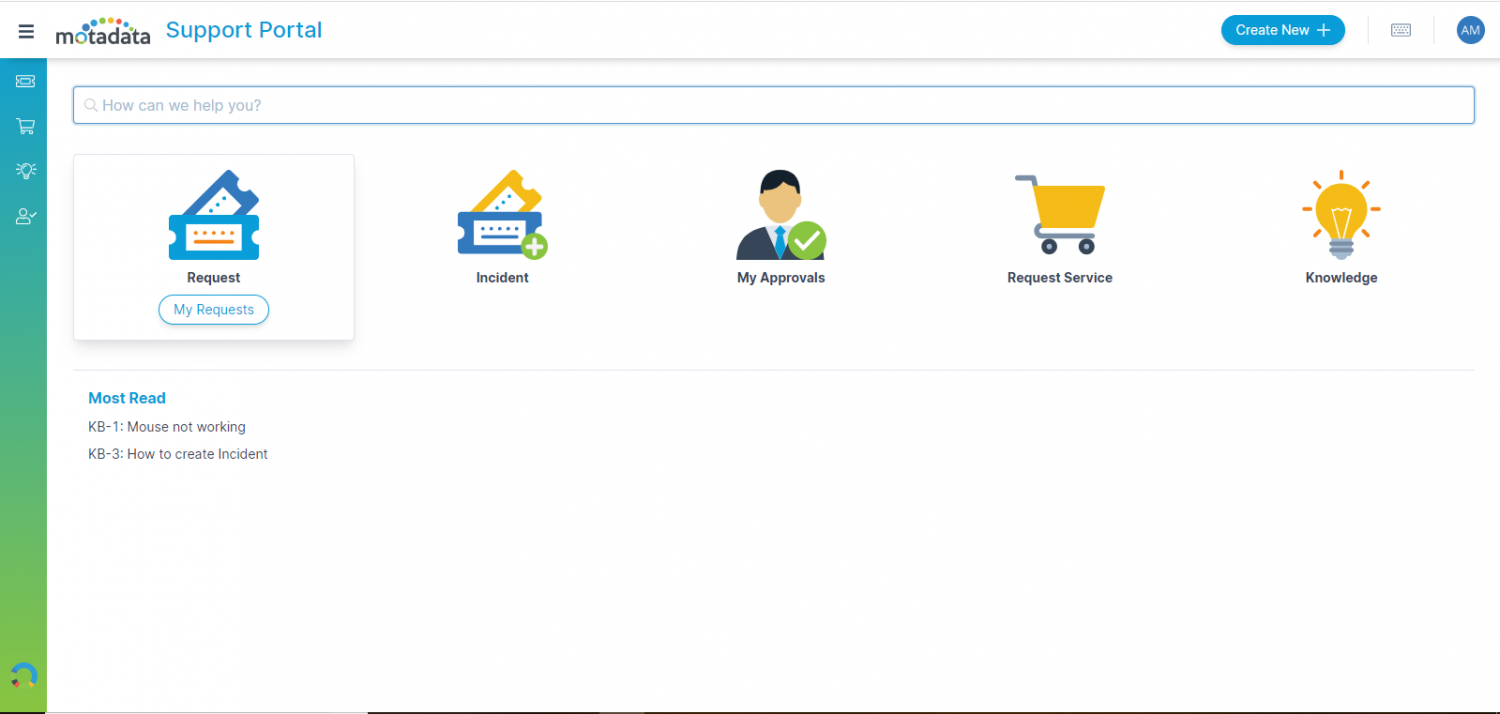Providing support to customers has a cost to the company; it doesn’t matter whether the support is for internal or external users.
When we talk of serving internal customers, ITSM obviously comes into the picture.
ITSM is an important IT investment that has a direct bearing on the quality of an organization’s IT services, but has a significant cost attached to it.
The cost aspect of an ITSM solution can be managed using a self-service portal.
Want to know how? Before that let’s answer a few fundamental questions regarding a self-service portal, which are:
What is a self-service portal?
A self-service portal is a website that can be accessed from any device any location.
Generally, it’s an extension of an ITSM solution. Employees visit the self-service portal to find a solution to their problems.
By design, a self-service portal makes finding solutions easy by giving direct access to a knowledge base.
Motadata ITSM offers a robust self-service portal that has an advanced search for searching the knowledge base.
What should be there in a self-service portal?

A self-service portal meant for internal users should minimum have the following:
- Ability to search a knowledge base
- A list of predefined services
- The ability for a user to create a ticket when there’s no available solution.
- Ability to check the status of created tickets
- Status of approvals assigned to the user
Motadata self-service portal offers all the above features and also a modern UI.

What are the benefits of implementing a self-service portal?
According to a survey from Veriday: 73% of customers want to resolve their issues related to products/services by themselves.
This fact is an eye-opener for a lot of IT leaders out there; because letting employees resolve their own issues has a direct cost-benefit associated with it.
Apart from cost saving there are other benefits:
- Improves the overall experience of the employees : A self-service portal allows users to seek help at their convenience.
- Makes available services visible: Employees can view all predefined services available on the portal. In Motadata, predefined services are grouped by catalog.
- Reduces the workload of service technicians: A self-service portal encourages employees to find solutions to known issues by themselves, thus preventing unnecessary creation of tickets that otherwise would have been created.
- Cost Saving: We have already discussed how a self-service portal reduces the number of tickets generated. When that happens, an organization can run a service desk with a small number of service technicians; less manpower means less cost.
Different ways people can access a self-service portal?
For an internal self-service portal like what Motadata offers, employees can access it via a web browser, email or a mobile app.
New technologies have opened up open new channels to reach a self-service portal.
- Chatbots are becoming intelligent and more conversational, and they are the new frontier.
- Devices running virtual assistants from Google and Amazon gpt can serve as a proxy between the user and service desk.
What are the challenges of having a self-service portal?
Here are some challenges of having a self-service portal:
- Giving services through a self-service portal is impersonal and lacks a human touch. Even the predefined services on such portals are mostly automated and require minimum human interaction.
- Design plays a crucial role when it comes to the self-service portal. A poorly designed portal will make it difficult to use thus leaving users unhappy.
- It’s difficult to quantify the benefits of a self-service portal. Motadata ITSM allows its users to track the page views of individual KB content and the number of times a predefined service has been used.
- An effective self-service portal is powered by a comprehensive knowledge base. Keeping an up-to-date knowledge base is a tasking activity for the service delivery team.
How does a knowledge base add value?
A knowledge base is a collection of articles containing solutions to a known set of problems. This repository is the reason why self-service is possible.
In the context of self-service, a knowledge base is useful in two situations:
- When an employee is directly searching for a solution on the portal. Motadata offers advanced search for searching the KB.
- When an employee is about to file a ticket, the portal automatically suggests all relevant articles that could contain a possible solution. In Motadata, such suggestions are powered by ML that gets better over time.
How a self-service portal can help you in managing cost?
In an article from Harvard Business Review tells that, of a sample representing people across multiple industries, 81% prefer to take matters in their own hands before going to a representative.
So, data suggests there’s a lot of scope of self-service but the reality is that organizations struggle with the adoption of self-service.
In another survey by Happysignals, people have given the IT self-service portals the lowest happiness score.
In our experience, most organizations fail to design a self-service portal that would make employees happy.
The area they mostly fail is the part they have to incorporate their users’ experiences in creating content.
If an organization is able to realize the full potential of its self-service portal then it will greatly reduce the resources required to run the service desk thus saving money.
How to estimate the ROI of your self-service portal?
It is always important to quantify the initiatives your organization take to justify their existence.
With regards to your self-service portal, you can calculate the gross monthly saving using a simple formula:
You will require the following:

- Tickets handled each month: The average number of tickets your service desk has handled each month.
- Percentage of tickets deflected: An estimate of the percentage of tickets that can be deflected.
- Average cost of ticket: The average cost to handle a single ticket.
- Monthly self-service cost: The cost of running the portal which in most cases would be part of the ITSM investment.
This formula is indicative of the saving not an exact science.
Conclusion
Self-service in ITSM has transcended from a nice feature to a must-have feature, because the benefits have become too obvious. In this ever-connected world, a self-service portal is an important enabler.
If you are thinking of implementing a self-service portal then try Motadata ITSM for 30 days.
It comes with ML-powered knowledge suggestions to supercharge your self-service adoption.





 5K+ people have already subscribed
5K+ people have already subscribed